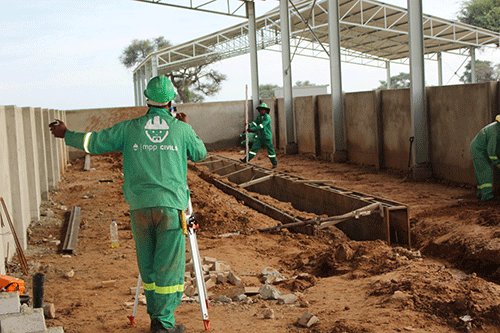According to stock brokerage Simonis Storm Securities (SSS), rising interest rates and the probability of another 100 basis points repo rate hike before the end of the year is expected to weigh heavily on household budgets, which are already stretched due to high food and fuel prices. This is expected to negatively impact housing buyer demand, particularly in the low to middle-income residential market.
“We do also expect demand for office/commercial property to be subdued owing to hybrid working arrangements with staff which requires less office space,” reads an SSS report on the latest building statistics in the country. SSS also noted that pipeline construction activity in Namibia looks less promising going forward into 2022.
The latest building statistics show that the City of Windhoek approved 153 building plans during May 2022, compared to 188 in the prior month, representing a decrease of 18.6% month-on-month (m/m) and 193 in May 2021 indicating a decrease of 20.7% year-on-year (y/y). The approved plans have a combined value of N$118.3 million and include 114 plans for additions, commercial (two plans), residential (30 plans), pools (two plans) and walls (five plans). SSS noted that both the number of submitted plans and plans being approved have been on a declining trend since March 2022, whereas building completions are trending down since February 2022.
During May 2022, building completions were down 47% as 45 were finished in May 2022, compared to 86 building completions in the prior month and were down almost 80% from the 216 completed in May 2021. The completed projects had a total value of N$56.2 million (compared to N$70.6 million for projects completed in May 2021) and were mainly for commercial (N$25 million), residential (N$24.8 million) and residential additions (N$5.9 million).
Meanwhile, the Swakopmund Municipality approved 58 building plans during May 2022, which is about 40% lower compared to 95 in the prior and down some 29% from the 45 in May 2021. Approved plans in Swakopmund have a total value of N$44.7 million and were focused solely on new residential plans. The SSS report notes that building completions in Swakopmund remain on an upward trend since February 2022, indicating better construction activity than in Windhoek.
The number of building plans approved for residential additions in Windhoek and Swakopmund combined decreased by 14.9% y/y in May 2022.
“At the outbreak of the national lockdown, residential additions and alterations activity increased significantly and remained elevated for most of 2020. Work from home arrangements which supported home improvement activity seems to be declining in recent months, most likely as employees return to offices for regular work,” the SSS report reads.
Globally, house prices have increased considerably post the pandemic outbreak – especially in the US – with the International Monetary Fund’s (IMF’s) global house price index increasing by 4.8% y/y in United States dollars in the second quarter of 2021. SSS pointed out that house prices are expected to retreat as interest rates increase following more aggressive monetary policy tightening in advanced economies.
However, Namibian house prices have been declining during the same period, following a sharp spike in national house prices between June and November 2020. Since its peak in May 2021, the FNB house price index has decreased by 18% y/y in May 2022. Also, the national average house price increased from about N$1.16 million in March 2021 to N$1.2 in March 2022 according to FNB.
On the rental side, FNB’s rental price index increased by 0.6% y/y in March 2021, compared to rental inflation of 1.4% y/y being recorded in March 2022 by the Namibia Statistics Agency (NSA). The national average monthly rent increased from N$6 926 in March 2021 to N$6 964 in March 2022, according to FNB.
Moreover, local building material costs increased by about 14% on average when analysing a basket of selected building materials. Gutters (up 77.7% y/y), steel door frames (up 33.0% y/y), roofing sink plates (up 16.3% y/y) and cement (up 10.5% y/y) are some of the materials with the largest annual price increases. Materials used by plumbers and electricians (pipe conduit and copper tubes) have seen some of the lowest price increases in May 2022, up by 0.3% y/y and 5.7% y/y respectively.
According to inflation data from the NSA, price increases of products used for routine maintenance and repair of buildings remain elevated at 3.4% y/y in May 2022. Prices for services of routine maintenance and repairs have been declining since double-digit highs last seen in 2019, rising only 5.4% y/y in May 2022.


